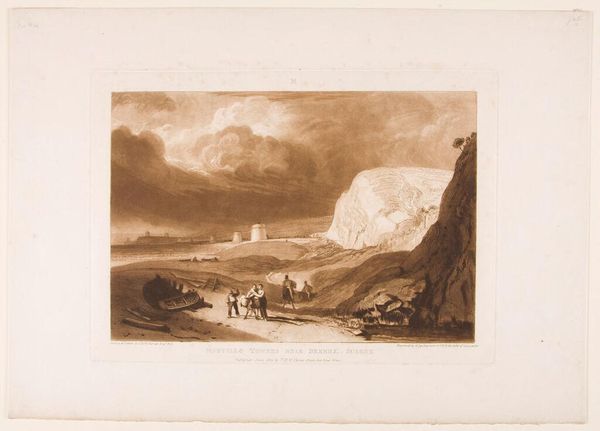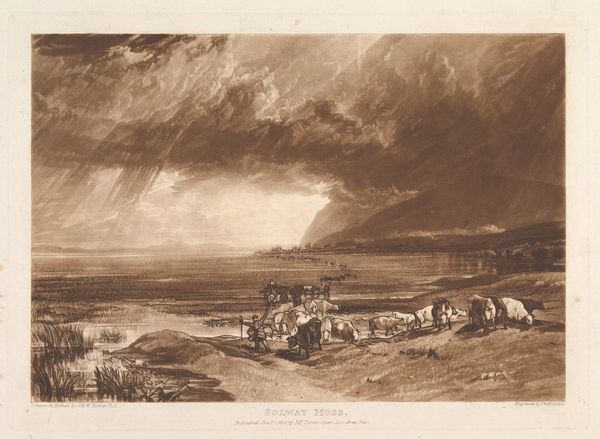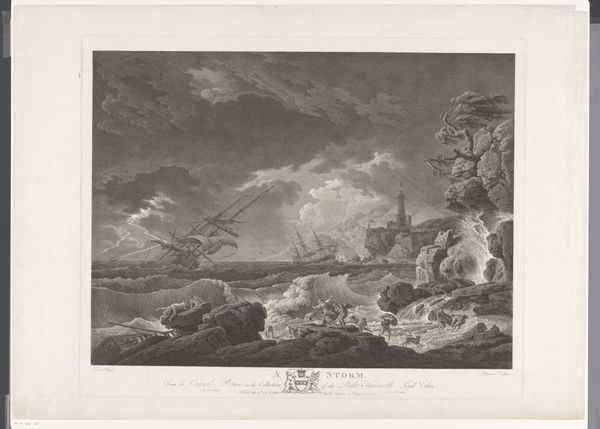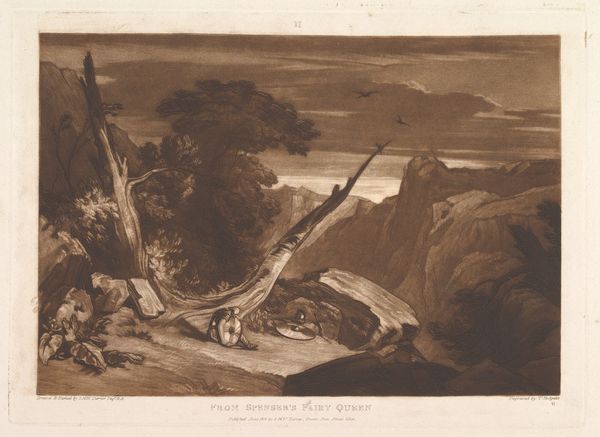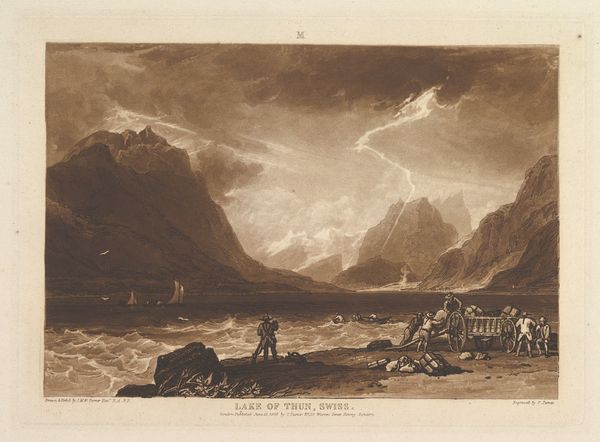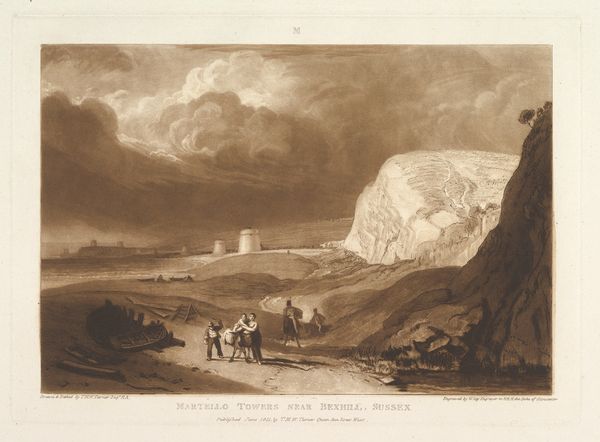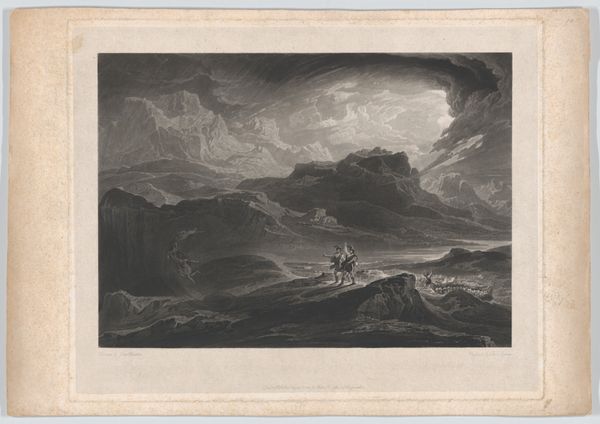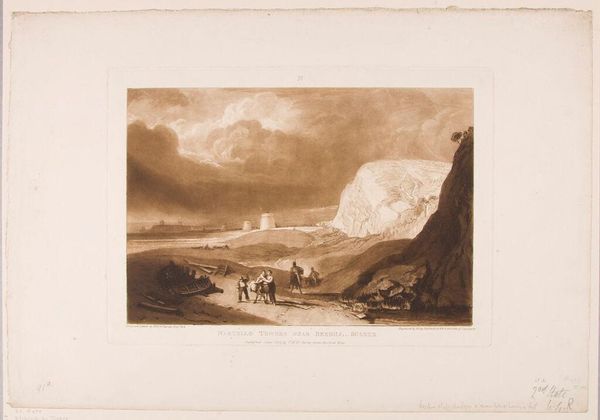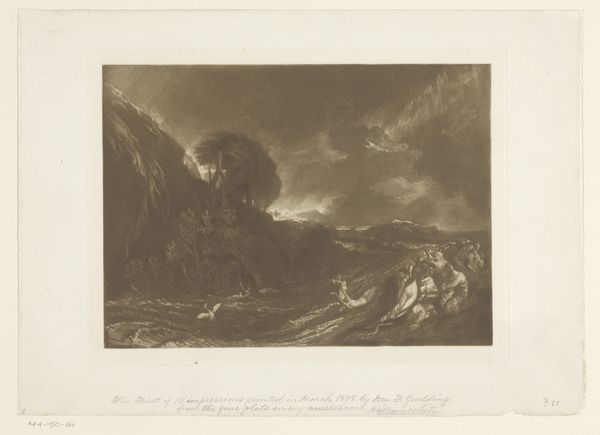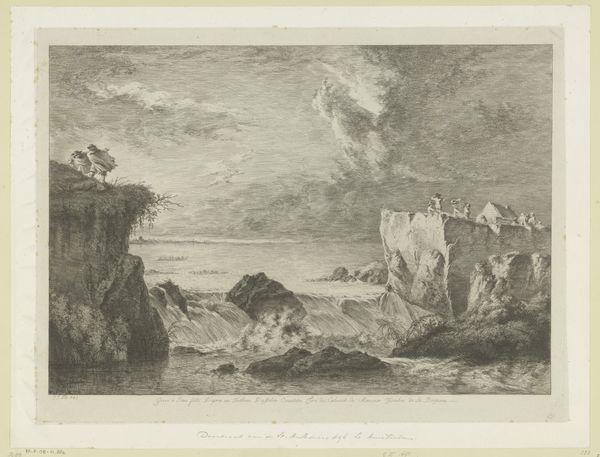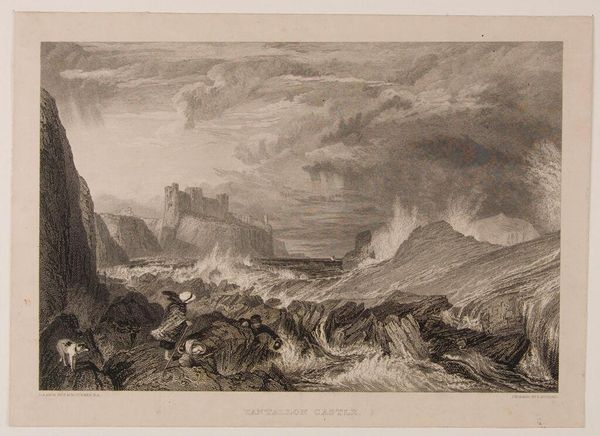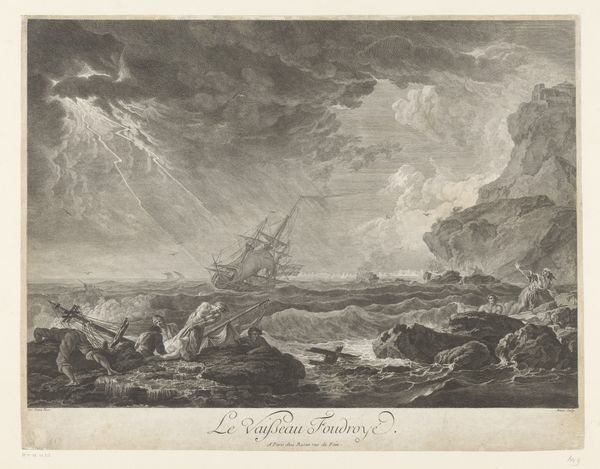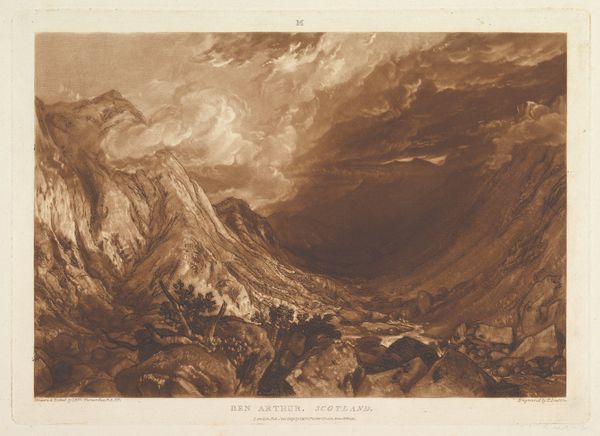
The Fifth Plague of Egypt (Liber Studiorum, part III, plate 16) 1808
0:00
0:00
drawing, print, etching
#
drawing
# print
#
etching
#
landscape
#
ancient-mediterranean
#
romanticism
#
history-painting
Dimensions: plate: 7 1/16 x 10 1/4 in. (17.9 x 26 cm) sheet: 8 1/4 x 11 7/16 in. (21 x 29.1 cm)
Copyright: Public Domain
Editor: Here we have J.M.W. Turner's "The Fifth Plague of Egypt," a print from 1808, combining etching and drawing. It’s rendered in this powerful sepia tone and, honestly, it’s quite apocalyptic. Pyramids loom in the background, dwarfed by the intense drama of the sky. What's your take on it? Curator: I am drawn to Turner’s innovative use of printmaking to challenge traditional artistic hierarchies. Here, we see etching—often considered a reproductive craft—used to depict a dramatic historical scene. The intense contrasts achieved through the layering of the etching process elevate the medium beyond mere reproduction. What can we understand about how the art of making and consumption shapes perceptions of works such as this? Editor: That's an interesting angle. I hadn't considered the process itself as contributing to the grandeur of the image. So, you're saying the "lowly" craft of etching is actually integral to its effect? Curator: Exactly. Think about the labour involved, the tools, and the material – the copper plate, the acid… all these elements contribute to the final visual outcome and underscore a specific historical moment of print production. Turner manipulates this “reproductive” process to produce something emotionally arresting. We need to question the perceived boundaries between ‘high’ art and what's seen as a more common practice of visual culture. How did this distribution via print change artmaking practices at the time? Editor: That does change my perception. Thinking about it as an accessible artwork, almost a commodity, suddenly it feels more grounded. Not just a spectacle, but a produced object. Curator: Precisely! The material conditions and distribution methods are crucial for understanding its impact and cultural significance. Editor: This has definitely given me a fresh perspective on how to approach prints, beyond just their visual content. I appreciate how you brought up these material factors and processes, something I probably wouldn't have focused on. Curator: Indeed, seeing art through the lens of its creation and consumption often reveals new and fascinating narratives!
Comments
No comments
Be the first to comment and join the conversation on the ultimate creative platform.
